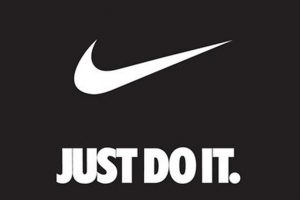How to Create an Innovative Business Model?
 Editor’s note: Nike, the iconic change agent, perfectly symbolizes not only the energy, focus, and discipline to achieve success, but the excitement that continues to ignite individuals and companies everywhere. “Just Do It” seemed to charge out of the gate as a viral and immortal brand. Author and IX contributor, Gijs van Wulfen, guides us in answering the question that is on the mind of so many innovators, How do we just do it? How do we create an innovative business model…
Editor’s note: Nike, the iconic change agent, perfectly symbolizes not only the energy, focus, and discipline to achieve success, but the excitement that continues to ignite individuals and companies everywhere. “Just Do It” seemed to charge out of the gate as a viral and immortal brand. Author and IX contributor, Gijs van Wulfen, guides us in answering the question that is on the mind of so many innovators, How do we just do it? How do we create an innovative business model…
Do you dream big about entering a huge market and overthrow the incumbents with an innovative business model, like Uber or AirBnB? Or, as innovation professional or manager, are you well aware of the threats of new start-ups entering your market? Do you want to be an active innovator or a reactive one? That’s the question.
As an active innovator, the innovation challenge is to overturn the conventions of your own market before others do. The awareness to rethink your business models is often there, but the main question is: “How do I come up with a new business model that disrupts my own market?†I was very pleased that McKinsey recently published a new approach to business model innovation that will help you how to come up with new business models[i]. It’s practical 5 step method to turn your present beliefs upside down.

Let’s take a closer look at their five steps:
1. Outline the dominant business model in your industry. To start, you answer the essential question: “What are the long-held core beliefs about how to create value?”.
2. Dissect the most important long-held belief into its supporting notions. How do notions about customer needs and interactions, technology, regulation, business economics, and ways of operating underpin the core belief?
3. Turn an underlying belief on its head. Formulate a radical new hypothesis, one that no one wants to believe—at least no one currently in your industry. Ask yourself outside-the-box ‘What-if’ questions. :
4. Sanity-test your reframe. Many reframed beliefs will just be nonsense. Applying a reframe that has already proved itself in another industry greatly enhances your prospects of hitting on something that makes business sense.
5. Translate the reframed belief into your industry’s new business model. Typically, once companies arrive at a reframe, the new mechanism for creating value suggests itself—a new way to interact with customers, organize your operating model, leverage your resources, or capture income.
Now let’s pick the car sector to apply this approach to come up with a new business model, where I will focus ‘car maintenance and repair’.
1.    The dominant business model in ‘car maintenance and repair’.Â
When you buy a car, the dealer gives you a 1, 2 or even 5-year guarantee on some vital parts. The condition is often that you have to have your car serviced at your local dealer. After a certain number of miles/kilometers, your car indicates it needs to go for a service check. You have to bring your car to the dealer and have to pick it up later that day. They might give you, as a service, a free replacement car. Afterward, you get an invoice where all the service and necessary repair work is specified and you have to pay it within two weeks.
2.    The most important long-held ‘car maintenance and repair’ beliefs and their supporting notions.Â
When you think deeply, you might identify the five following long-held ‘car maintenance and repair’ beliefs:
1.    Cars break down.
2.    Can break down sooner when they are not serviced.
3.    You must pay for car service as it prevents even more expensive repairs.
4.    Cars must be serviced by professional mechanics.
5.    Cars must be serviced at professional garages
3.    Turning an underlying ‘car maintenance and repair’ belief on its head.Â
In this step, you do some breakthrough thinking by turning every belief on its head. This leads to the following new assumptions:
1.    What if cars never break down?
2.    What if cars are made service-less?
3.    What if you get paid when your car needs service or repair?
4.    What if anyone or anything can repair the car?
5.    What if a car can be repaired everywhere?
4.    Sanity-test our ‘car maintenance and repair’ reframes.Â
Doing a quick sanity test on all five ‘what-if’ assumptions at the present state of technology, you have to admit that cars still break down indeed. They still need service indeed, for example, to change tires from summer tires to winter tires, as we do in Northern Europe. Getting paid when my car needs service is a great and very attractive promise to customers. I hope this one will come true soon, but would you be willing to risk this cash-out as car producer right now….. I have my doubts. Now both assumption 4 and 5 could potentially make the sanity test.
5. Translate our reframed ‘car maintenance and repair’ belief into a new business model.
When you translate “anyone or anything can repair a car†into a business model and combine this with the fact that “cars can be repaired anywhere†you might come up with new concepts like:
1.    Join the Service Club. On special service days, you can see on your app, a Service Truck will enter your street and you can get the service package you need, and even professional help of a real mechanic. You pay a subscription to the Service Club, which makes the professional help free of charge. So no surprises.
2.    A “McCar-service drive thru†in front of the drive-thru of a MacDonalds: while waiting for your hamburgers your car is instantly serviced. At the MacDonalds check-out, you pay for both;
3.    When your car needs repair, you app a service-drone, which flies to you with a service-package which shows you on screen how you can do the service job yourself.
These five steps really make sense. In their approach, you recognize of course the creative process of divergent – and convergent thinking. The success in applying this new approach to generate new disruptive business models for you is, in my view, dependent on one thing: the ability of you and your colleagues/partners to postpone your judgment and really think outside-the-box formulating your ‘What-if’ questions. Be sure to practice this together upfront and create the right physical and mental environment for being creative together.
Wishing you lots of success creating your new business model.
image credit: nike.com; forth-innovation.com
Did you like this post? Then, check out Gijs van Wulfen’s new book ‘The Innovation Maze’ at: Amazon UK or Amazon US.
Wait! Before you go.
Choose how you want the latest innovation content delivered to you:
- Daily — RSS Feed — Email — Twitter — Facebook — Linkedin Today
- Weekly — Email Newsletter — Free Magazine — Linkedin Group
 Gijs van Wulfen helps organizations to structure the chaotic start of innovation as author, speaker, and facilitator. He is the founder of the FORTH innovation method and author of the innovation bestseller The Innovation Expedition. He was chosen by LinkedIn as one of their first 150 Influencers. Are you looking for an inspiring innovation speaker? Check out the video and great reviews at gijsvanwulfen.com. Follow Gijs @gijsvanwulfen Check out Gijs van Wulfen’s new book The Innovation Maze at: Amazon UK or Amazon US.
Gijs van Wulfen helps organizations to structure the chaotic start of innovation as author, speaker, and facilitator. He is the founder of the FORTH innovation method and author of the innovation bestseller The Innovation Expedition. He was chosen by LinkedIn as one of their first 150 Influencers. Are you looking for an inspiring innovation speaker? Check out the video and great reviews at gijsvanwulfen.com. Follow Gijs @gijsvanwulfen Check out Gijs van Wulfen’s new book The Innovation Maze at: Amazon UK or Amazon US.
NEVER MISS ANOTHER NEWSLETTER!
LATEST BLOGS
Three things you didn’t know about credit cards
Photo by Ales Nesetril on Unsplash Many of us use credit cards regularly. From using them for everyday purchases to…
Read MoreFive CV skills of a business-minded individual
Photo by Scott Graham on Unsplash The skills listed on a CV help employers quickly understand your suitability for a…
Read More


